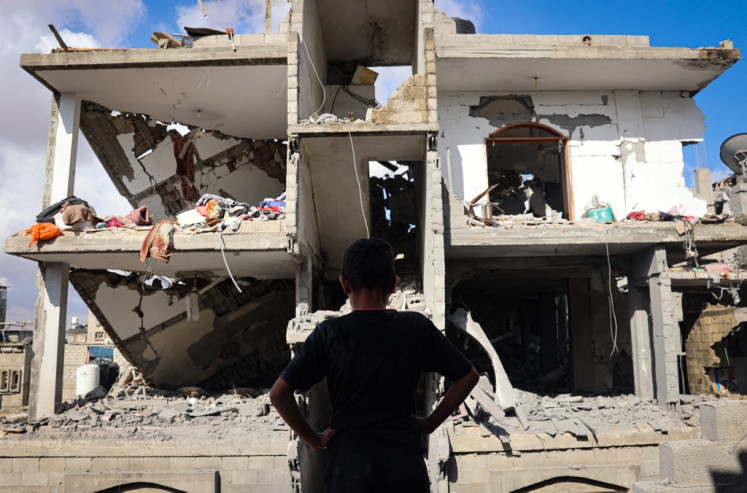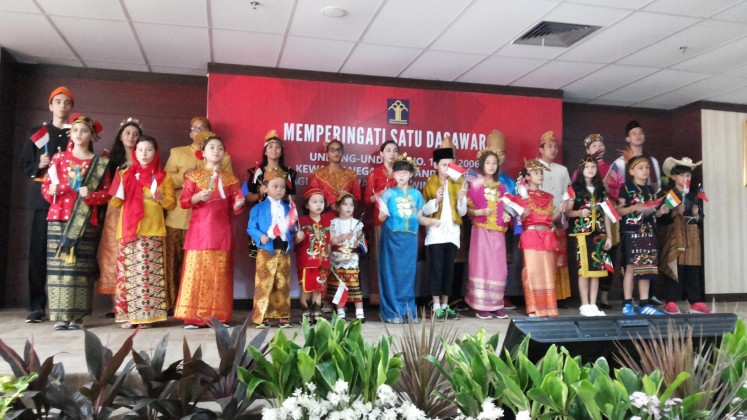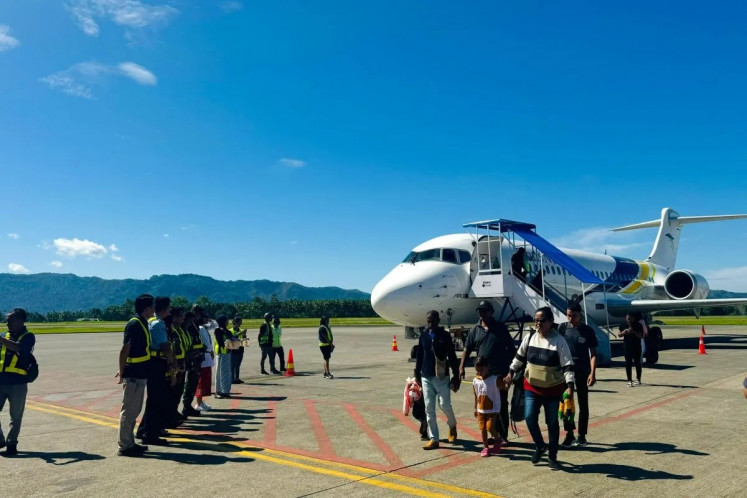The transit camp
Only sad memories: A farmer (photo left) passes the former BTN Bumi Asri Ketapang housing complex in Ketapang hamlet, Gegerung village while Halimah, 44, (photo right) passes partitioned rooms at Wisma Transito, Mataram, all in West Nusa Tenggara province

O
span class="inline inline-none">Only sad memories: A farmer (photo left) passes the former BTN Bumi Asri Ketapang housing complex in Ketapang hamlet, Gegerung village while Halimah, 44, (photo right) passes partitioned rooms at Wisma Transito, Mataram, all in West Nusa Tenggara province. Halimah and hundreds of Ahmadiyah community members used to live in the housing complex prior to their homes being destroyed by mobs.
Stones were flying overhead, pounding on rooftops. While running away, a number of people shouted, “Rid this village of Ahmadiyah!” Houses were destroyed, set on fire and marked with graffiti, while roofs, frames, doors and windows were wrenched from their fixings.
Six years ago this agonizing incident occurred in the hamlet of Ketapang, Gegerung village, West Lombok, West Nusa Tenggara, forcing 138 Ahmadiyah followers, who are 98 percent Sasak people indigenous to Lombok, to live in a refugee transit camp locally known as ‘Wisma Transito’.
The camp for would-be Sasak migrants bound for Kalimantan, Papua, Sulawesi and Sumbawa was built in 1974 in Majeluk, West Lombok. Derived from the Sasak word jeluk or “dried in the sun”, during the Japanese occupation Majeluk was the place where detainees were tortured and exposed to the sun to die. In the transit camp, 34 Ahmadiyah families live in rows of small rooms measuring 2 meters by 3 meters in three dormitory buildings. One night, Pak Sahidin related the Ketapang tragedy.
In 2005, Sahidin, an Ahmadiyah member from Sambihilin, Bayan, North Lombok, was informed by his relative of the presence of a vacant BTN housing complex in Ketapang, West Lombok. After being forced to leave his village in Bayan, Sahidin moved to East Lombok and Sumbawa for a while but again he was driven away.
Ketapang was his seventh dwelling place, which he bought by selling his paddy field in East Lombok. Only living for a year there, on Feb. 4, 2006 the house was again ravaged and he was ejected along with 33 other Ahmadiyah families.
“Now we have no more money, all Ahmadiyah families’ assets in the form of paddy fields and land in North and East Lombok were
sold to buy houses in Ketapang, with no certainty about any compensation for our lost homes and land, except an appeal to the West Lombok regional administration and with no further realization,” said Pak Sahidin.
Ahmadiyah adherents are no strangers to transit camps. Their isolation is not only due to the opposition of local communities opposed to the Ahmadiyah faith, but also apparently to the legality of such treatment accorded by local authorities.
Their rights as citizens seem to be suspended. Where then is the Constitution of 1945, Article 29 paragraph 2, stipulating that the state shall guarantee the freedom of all citizens to embrace their religion and beliefs?
It was still in the wee hours, with the sight of a sleazy camp as vast as a soccer field. At a glance one would wonder if this transit accommodation is like a new-styled concentration camp. It could be…





— Photos By Dwianto Wibowo









